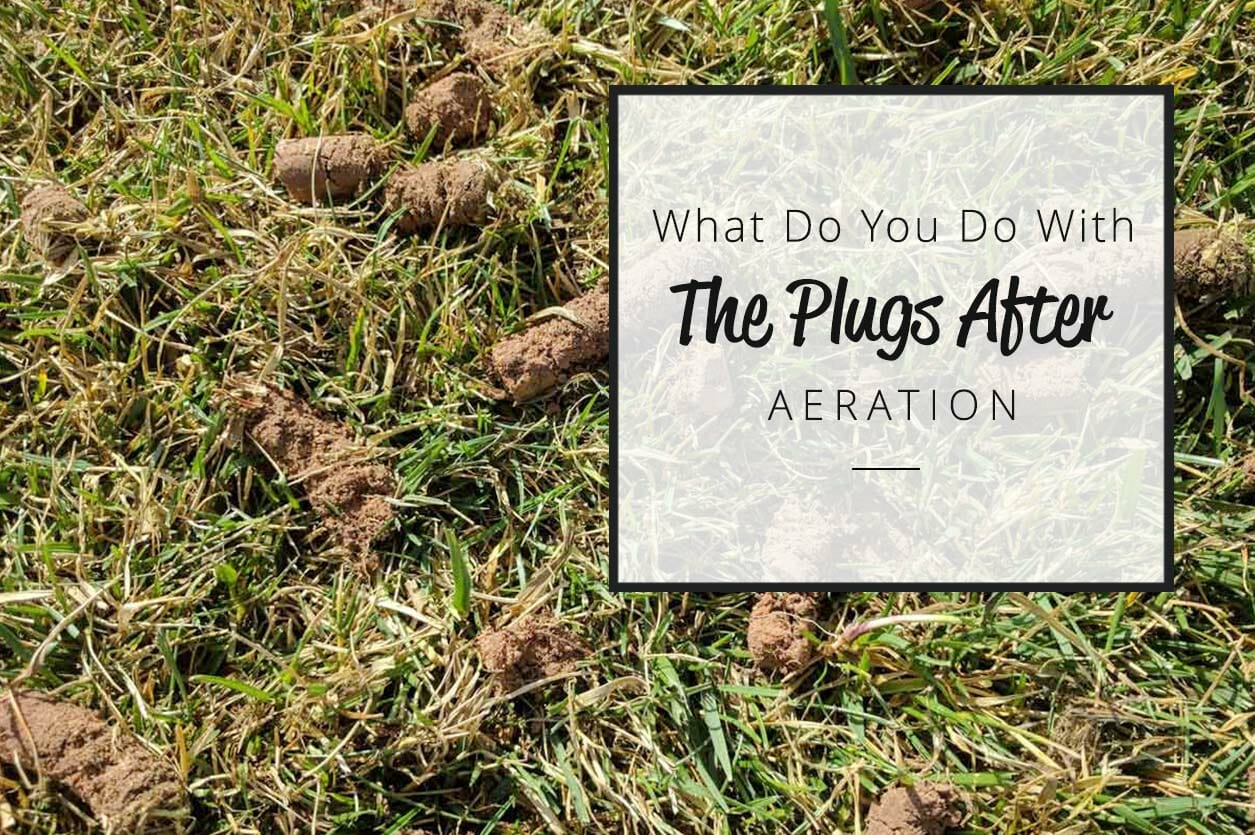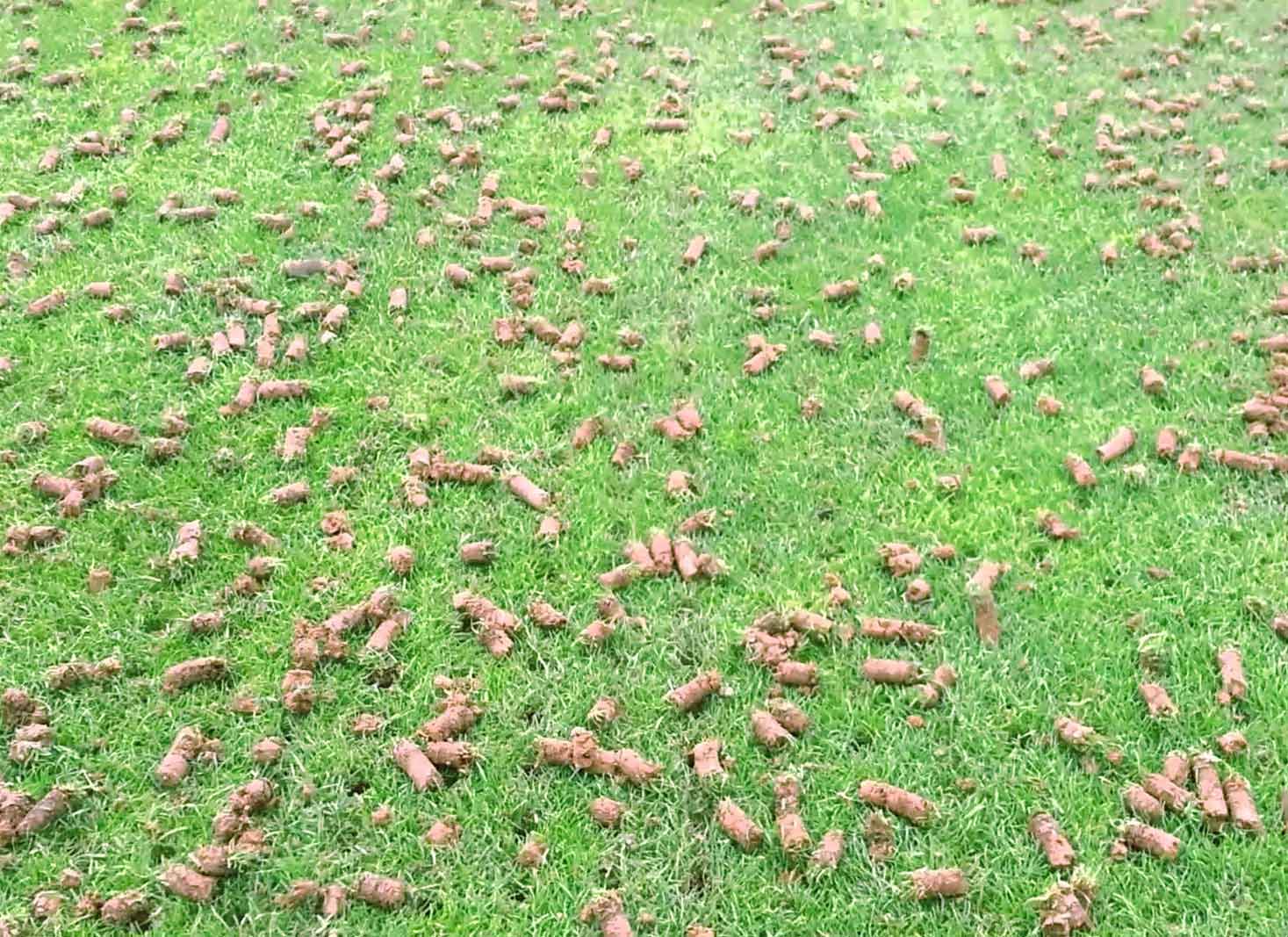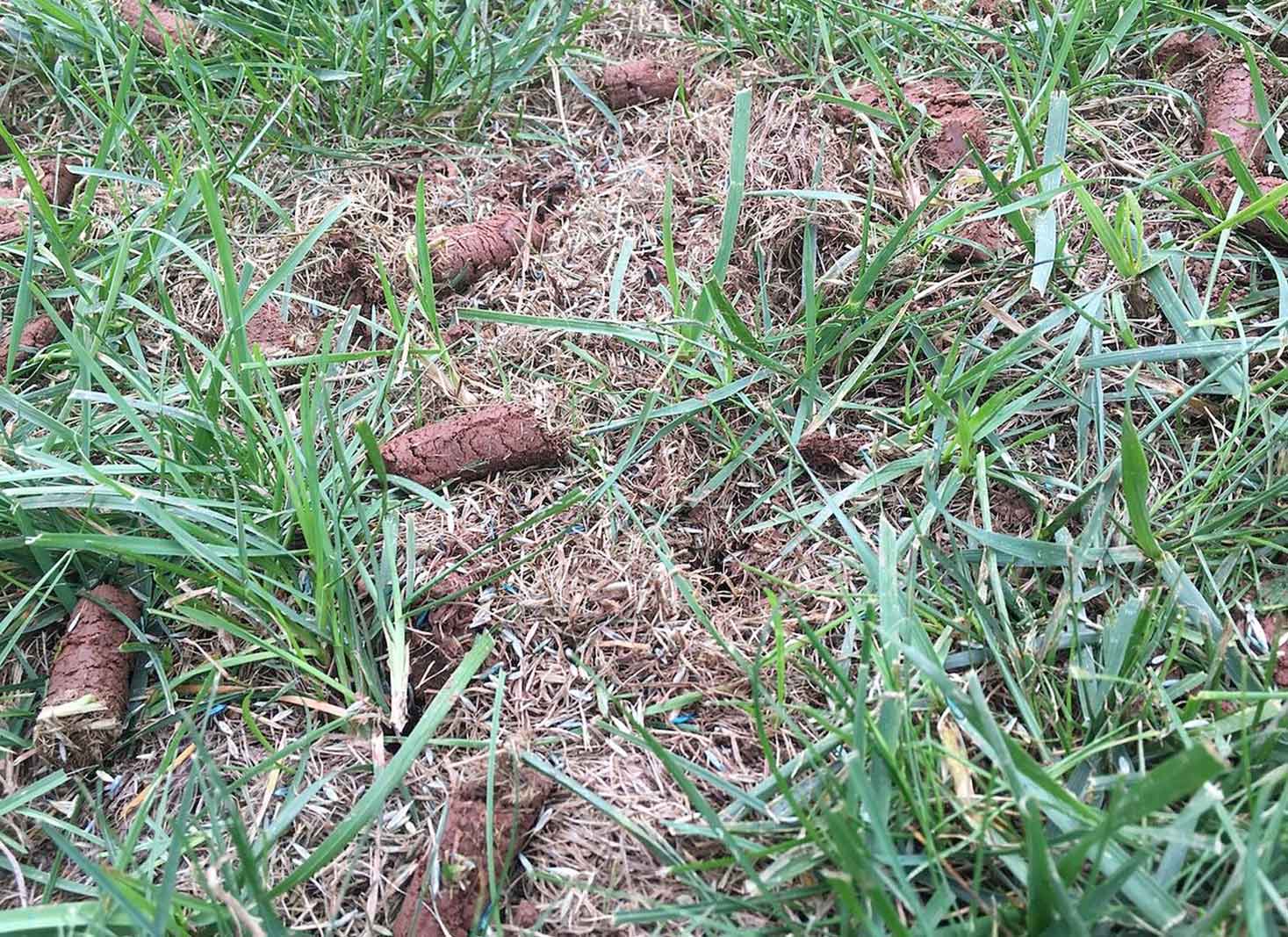
There is no doubt that the remaining aeration plugs can make the lawn appear unpleasant. While some homeowners choose to remove them by raking, others opt to leave them in the yard. So, what is considered the most effective approach?
Experts recommend leaving the plugs on your lawn after aeration. The plugs will break down naturally after a few days and return nutrients to the soil, thus improving the soil’s fertility and overall health. You can aid the breakdown by deeply watering your lawn or aerating it just before it rains.
If you are still confused about what to do with the soil plugs after aeration, this article will give you all the answers you need.
What we cover
ToggleWhy should you leave the plugs on your lawn after aeration?

The main aim of lawn aeration is to break up the soil to reduce compaction and allow air, water, and nutrients to penetrate better into the soil. As a result, your lawn becomes healthier and lusher.
After aeration, the plugs left behind may make your lawn look unsightly. As much as you may want to remove the plugs from your yard, it is best to leave them. Here is why:
1. Plugs have essential microorganisms
The soil plugs contain many essential soil microbes and nutrients that are paramount for the soil’s health. The microorganisms find it safe to hide within the plugs and the thatch layer of grass and promote aeration as they move within your lawn. This allows oxygen, water, and nutrients to penetrate easily.
Allowing soil plugs to decompose naturally helps return the nutrients into the soil, thus improving the overall health of your lawn.
2. They are part of your yard’s topsoil
The soil plugs are actually topsoil where fertilizer and manure have been applied. By getting rid of the plugs, you are throwing away the fertile topsoil and robbing your lawn of its natural nutrients.
Over time, the grass will thin out, and the general health of the lawn will deteriorate.
3. Maintain lawn level
The soil plugs are part of your lawn’s dirt. Throwing them out may cause low spots on the lawn, causing the ground level to sink over time. The soil plugs help maintain and improve your lawn’s level. Raking the plugs into the low spots can help level out the ground.
4. Prevent the soil from being compacted again
Aeration reduces soil compaction by breaking down the hard top soil in the lawn. Removing the soil plugs or using harsh methods such as lawn rolling to disintegrate them faster can make the soil become compacted again, in which case the aeration process will be a big fail.
5. They will break down on their own
When left undisturbed, soil plugs will eventually break down within 2–6 weeks. The breakdown will be faster if it rains after aeration. You can also water your lawn to speed up the process.
If you choose to remove the plugs, then get rid of those that have found their way to the walkways, roads, and far edges of the lawn where you can easily rake, taking care not to step on the lawn as this will make the ground compact again. This prevents the buildup of soil or dirt on curbs and walkways.
After aeration, it is good practice to fertilize, overseed, and water the lawn to make it fuller and healthier.
Benefits of leaving soil plugs on the lawn

Soil plugs left after core aeration have many potential benefits. These include:
- Soil plugs can be used to fill low spots in your yard. Raking the plugs from high to low areas can help level the lawn. This can be a better option if you do not want the hassle of shoveling new topsoil into the low spots.
- Plugs help prevent water from stagnating or flooding in low areas by filling up the spaces.
- Plugs can fill holes left behind after removing fence posts or tree stumps.
- The cores are loaded with lots of microbes and fertilizer. Therefore, they give back these crucial nutrients to your yard.
The goal is to have a healthier, fuller, and more beautiful lawn. If you can achieve all these benefits by leaving the soil plugs on your lawn, why spend more time and money raking away the plugs or shoveling in new topsoil?
How long do plugs take to decompose?

Plugs decompose within 2 to 6 weeks, depending on factors such as:
- The type and condition of the soil
- The type of aerator you use
- Weather conditions
- The traffic your lawn receives
To speed up the breakdown process, water your lawn within the same day of aerating, and while on it, take care not to overdo it, as this will result in erosion. Also, avoid stepping on the lawn too much, as it may cause the soil to compact again.
Clay soil plugs can take a while to break down, typically up to 6 weeks or more. The breakdown process can take even longer if the weather is hot and dry, as the clay plugs get baked. On the other hand, sandy and loamy soil plugs can start to break down on their own if left to dry for one to three days.
How to speed up the breakdown process of soil plugs
As mentioned above, plugs take about 2–6 weeks to decompose. After aeration, continue your regular lawn care and maintenance schedule to speed up the decomposition of the soil plugs.
- Mow your lawn regularly. The lawn mower blades and wheels help break down the plugs.
- Use your lawn for everyday outdoor activities such as recreation or family gatherings to increase foot traffic. However, do not overdo it, as too much traffic can cause soil compaction.
- Overseed, water, and fertilize your lawn. Watering your lawn will help the grass seeds germinate and, at the same time, break down the soil plugs.
If your lawn does not need overseeding, continue watering and mowing it as usual.
Should I remove the plugs anyway?

People have different opinions on whether to remove or leave soil plugs on your lawn after aeration. The choice you make depends on your preferences and the condition of your yard.
If your lawn has bare spots, thinning, yellowing, or brown grass, you might want to leave the plugs to improve the lawn’s health. Also, if the lawn has low spots, the plugs could be a simpler and cheaper way to level the ground.
On the other hand, if the plugs make your lawn unsightly and your lawn is fairly healthy, you may prefer removing the plugs. Below are instances where removing the soil plugs could be a good option for you.
- Leaving your lawn with plugs scattered all over may make the lawn look messy. The small clumps distributed all over the yard can take a while to decompose, which means you will have an unkempt lawn for up to 6 weeks or more.
- The parts covered by plugs will not receive direct sunlight. This can cause yellowing in warm-season grass.
- They may not add any nutritional value to your soil.
Can you mow just after aeration?
Yes, you can mow your lawn after aeration if you did not get a chance to mow before aerating.
Mowing and dethatching the lawn prior to aeration allows the aerator to reach deeper into the soil. If you plan to overseed after aeration, mow the lawn after the new grass reaches mature growth, as mowing can damage the new grass seedlings.
Can you rake up plugs after aeration?
Raking will help you level your lawn by filling low spots with plugs from high levels. It also aids in the removal of plugs from the sidewalk. However, do not rake with the aim of getting rid of the soil plugs.
It is better to leave the plugs in the yard, as they will return nutrients and microorganisms to the soil, thus maintaining and boosting the lawn’s fertility and health.






